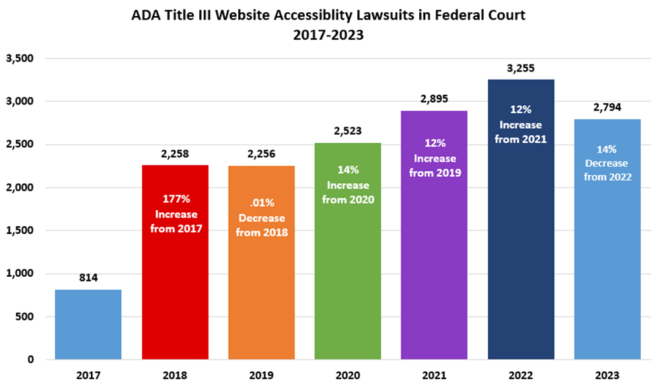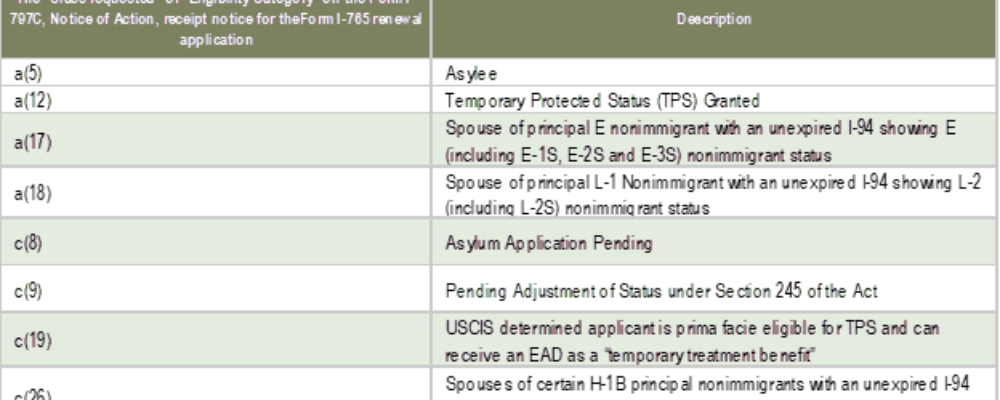By Kristina M. Launey & Minh N. Vu
Seyfarth Synopsis: Plaintiffs filed 2,794 website accessibility lawsuits in federal court in 2023 – a 14% decrease from 2022.
After 2022’s record-setting year for website accessibility lawsuits filed in federal court, the 2023 filings dropped by 14%. The total number of lawsuits filed in federal court alleging that plaintiffs with a disability could not use websites because they were not designed to be accessible and/or work with assistive technologies in 2023 was 2,794–461 fewer than 2022. This 14% decrease in the number of lawsuits in 2023 takes us below even 2021 filing totals, but still above the total number of lawsuits filed in 2020 (and any year prior).
Website accessibility lawsuits made up 34 percent of the total number of ADA Title III lawsuits filed in federal court in 2023 (2794 out of 8227 cases). In 2022, website accessibility lawsuits made up 37 percent of all the ADA Title III lawsuits filed in federal court (3225 out of 8694 cases). Also, as shown in the graph below, the number of filings per month ranged from a low of 162 cases in December to a high of 308 cases in August.
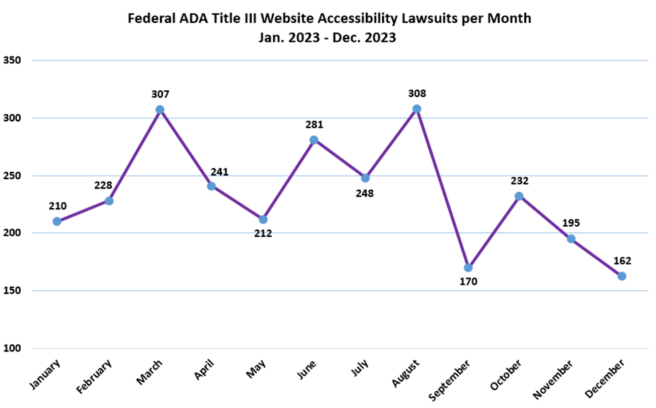
New York federal courts continued to be the busiest by a wide margin, with Florida retaining the #2 position, and Pennsylvania slotting in as #3. Illinois passed California for the #4 spot. New York federal courts saw 2,152 lawsuits filed in 2023 (continuing a solid trend of 2,560 in 2022, 2,074 in 2021, 1,694 in 2020, 1,354 in 2019, and 1,564 in 2018). Florida was a distant second with 385 lawsuits, up from 310 in 2022. California federal courts saw only 30 lawsuits in 2023, down from 126 in 2022. Pennsylvania came in at 143 in 2023.
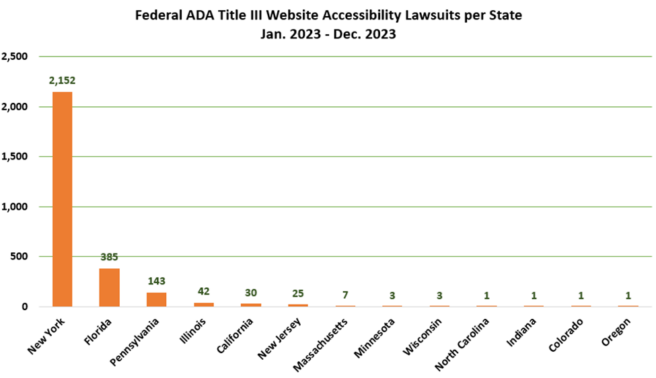
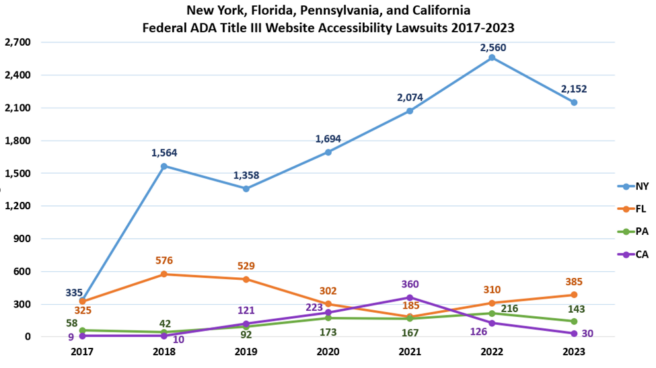
If you’re wondering why California has so few website accessibility cases relative to New York, it is likely because judges in New York federal courts – with a few exceptions – have historically been more favorable toward plaintiffs, especially when the defendant is an online-only business. Although the Court of Appeals for the Second Circuit has yet to decide whether online-only businesses are covered by the ADA, most district court judges in New York to have addressed the issue have concluded that they are.
In contrast, in California, both federal and state courts of appeals have reached the conclusion that online only businesses are not covered by the ADA, making it virtually impossible for plaintiffs to sue online-only businesses for accessibility violations. Thus, we predict fewer website accessibility cases in both California state and federal courts in the future. That said, in our practice we continue to see a significant numbers of demand letters, and lawsuits filed in California state courts, which are not included in our federal lawsuit numbers.
Why was there an overall decrease in the number of website accessibility lawsuits filed in federal courts throughout the country last year? While there is no way to know for certain, we think there are at least four factors in play.
First, and most significantly, we noticed that a number of plaintiffs’ firms responsible for historically significant numbers of filings started filing website accessibility lawsuits in state courts in NY, NJ, and PA in 2023, instead of federal court. Since these filings are difficult to track, it may well be that the total number of website accessibility lawsuits increased year-over-year when accounting for state court filings.
Second, some of the plaintiffs’ lawyers who used to file a substantial number of these lawsuits seem to be less active in this space.
Third, more businesses are making website accessibility a priority, and so perhaps websites are more accessible than they were five years ago.
Fourth, many businesses have already been sued over the accessibility of the websites at least once and are potentially more likely to push back with the assistance of their consultants and/or counsel, providing something of a disincentive to serial ADA filers.
In August 2023, the U.S. Department of Justice issued new regulations under Title II of the ADA requiring websites and mobile apps of state and local governments to conform to the Web Content Accessibility Guidelines version 2.1, Level AA (WCAG 2.1 AA) within two or three years, depending on their size. Will these new rules impact the number of website accessibility lawsuits filed against public accommodations? We think it’s unlikely. Will the DOJ issue regulations in the near future covering the websites and mobile apps of public accommodations? We think this too is unlikely, and any proposed regulations would most certainly be halted if there is a change in administration.
The bottom line is that lawsuits alleging inaccessible websites will continue to be a significant percentage of the ADA Title III filings in federal court for the indefinite future, particularly because the requirements for an accessible website continue to evolve. While federal government agencies only have to comply with WCAG 2.0 AA to be accessible, the DOJ adopted the more stringent WCAG 2.1 AA as a legally binding accessibility standard for state and local governments in August 2023. Just a few months later, the World Wide Web Consortium (WC3) issued WCAG 2.2 AA which added a number of new requirements. And then just a month ago W3C issued a first draft of WCAG 3.0. Version 3.0 is a total revamp of the guidelines and, per the WC3, is “a new model and guidelines to make web content and applications accessible to people with disabilities.”
***
About our methodology: Our 2023 numbers are based on searches using keywords of data from the Courthouse News Services. Thus, it is possible that there are some website accessibility cases that were not captured in the searches if their descriptions did not include the keywords. We then review the thousands of entries manually to remove lawsuits that may be about websites but are not about a website’s accessibility to a user with a disability.
Edited by John W. Egan
“With approximately 900 lawyers across 17 offices, Seyfarth Shaw LLP provides advisory, litigation, and transactional legal services to clients worldwide.”
Please visit the firm link to site


